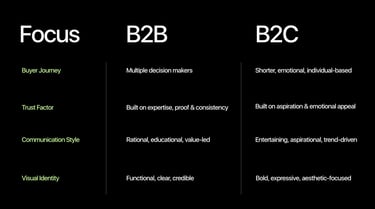Building a B2B Brand from Scratch? Read This First
If you're in the early stages of building a B2B brand, this guide will help you think beyond the surface and set the right foundation for long-term success.
Brand Blinks Global
4 min read


Starting a B2B brand starts with shaping how your company is understood, trusted, and chosen, especially in a world where buyers are sceptical, decision-making cycles are long, and trust takes time to earn.
If you're in the early stages of building a B2B brand, this guide will help you think beyond the surface and set the right foundation for long-term success.
Why Branding Matters So Much in B2B
Unlike B2C, B2B buyers make rational, research-backed, and risk-aware decisions. They often need to:
+ Justify purchases to multiple stakeholders
+ Trust the vendor for long-term implementation/support
+ Align the product/service with strategic business goals
That’s why B2B branding must do more than look polished; it needs to be:
+ Clear (what you do and why you matter)
+ Consistent (across sales, website, leadership, and marketing)
+ Credible (proof of expertise, value, and reliability)
Great B2B branding builds trust before sales begin.
That’s the power of brand development done right.
What Makes B2B Brand Building Unique?
Here’s how building a B2B brand is different from launching a B2C brand:


Step-by-Step Guide to Building a B2B Brand from Scratch:
Step 1: Define Your Brand Foundation
Before colours, taglines, or even a website, define what your brand stands for.
Ask:
What problem are we solving?
Who do we help, and how do we help them better than others?
What’s our mission beyond profits?
What change are we enabling?
This is the foundation of your brand strategy and development process.
Step 2: Know Your Ideal B2B Buyer
Don’t target everyone. Your goal is precision.
Create clear buyer personas with:
+ Industry, company size, role/title
+ Pain points and decision-making drivers
+ Buying objections and trust triggers
+ Preferred communication channels
This will guide both messaging and offer design.
Step 3: Develop a Brand Strategy
Your brand strategy should define:
+ Your positioning: What makes you different?
+ Your voice and tone: How do you want to sound?
+ Your brand pillars: Core values that influence action
+ Key messages: What do people need to remember about you?
Done right, this is the blueprint that connects your brand to sales, marketing, hiring, and product.

Step 4: Create a Clear and Credible Visual Identity
In B2B, visual identity isn’t about flash; it’s about functionality, recognition, and trust.
Key elements:
+ Logo
+ Typography
+ Colour palette
+ Brand visuals
+ Templates for decks, proposals, and case studies
Visual clarity improves perceived authority and builds confidence in prospects.
Step 5: Build a Strong Digital Presence
B2B buyers conduct 70% of their research before speaking with sales.
Your digital brand is often your first impression.
Must-haves:
+ A positioning-led website (not just “about us” pages)
+ A strong LinkedIn brand page and team alignment
+ Thought leadership content (blogs, guides, whitepapers)
+ Case studies and proof of work
All should reflect the same tone, visuals, and strategic clarity you defined earlier.
Step 6: Align the Entire Team
Your brand is not just a marketing effort; it must be a company-wide standard.
How to do it:
+ Share your brand strategy across functions (sales, product, HR, support)
+ Create internal playbooks on messaging, tone, and visuals
+ Train leadership and frontline teams on how to represent the brand
+ Audit frequently to correct drift and confusion
Step 7: Document and Measure Progress
Use internal tools to measure brand alignment and external tools to track reputation, clarity, and engagement.
Sample internal health metrics:
Does everyone explain the brand the same way?
Are we using outdated decks or inconsistent materials?
Do sales and marketing tell the same story?
External signals:
Do leads mention clarity, trust, or perception?
Are you seeing inbound traffic or referrals?
Are competitors starting to mimic your messaging?
Common Mistakes When Building a B2B Brand
Avoid these at all costs:
Jumping straight to design without strategy
Using generic messaging like “we’re innovative”
Being overly product-focused instead of value-driven
Inconsistent communication across teams
Ignoring internal buy-in before external campaigns
Most of these problems are solved early when you work with a brand development agency that understands B2B dynamics.
The Impact of Strong B2B Branding
+ B2B companies with strong brands generate 20% more ROI than weaker peers (McKinsey & Company)
+ 77% of B2B marketers say branding is critical to growth, but only 33% have a clear strategy (LinkedIn for Marketing)
+ 59% of B2B buyers prefer brands that act like thought leaders, not product pushers (Edelman)
FAQs
Q1. What’s the first step in building a B2B brand?
Start with clarity, understand your audience, your value proposition, and your positioning. Avoid jumping straight to design.
Q2. Do I need a brand agency to help with this?
If you’re early-stage, you can begin in-house. But a professional brand development agency can help speed up the process and bring clarity, creativity, and structure.
Q3. How is B2B branding different from B2C?
B2B branding focuses more on trust, consistency, and long-term value. B2C is more about emotional connection and trends.
Q4. How long before we see results?
You’ll see early signs (engagement, clarity, better sales calls) in weeks. ROI from branding typically compounds over 6–12 months.
Q5. Should founders be involved in brand development?
Absolutely. Brand starts from the top. Founders shape the vision, tone, and long-term direction of the brand.



© 2025 BRNDXMORPH Media Worldwide Private Limited. All rights reserved
Brand Blinks Global is an independent global brand consulting x transformation company.
The trademarks, logos, and service marks displayed on this site are the property of their respective owners.
"Brand Blinks Global," "Brand Blinks," "Made for the Uncommon," and the "bd" logo are trademarks or registered trademarks of BRNDXMORPH Media Worldwide Private Limited.
RESOURCES
INTELLIGENCE
BUSINESS
PARTNERSHIPS
COVERAGE
EXPLORE
Made for the Uncommon


When your brand grows, others rise too. 2% of your project empowers a nonprofit we back together every year.


